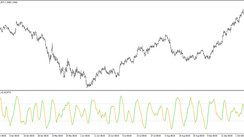Introduction to Trade Balances and Currency Exchange Rates
The trade balance of a country plays a vital role in shaping its currency exchange rates by influencing the supply and demand of foreign exchange. If a country’s exports do not equal its imports, thereby the trade account does not net to zero, then there is a variation in the supply or demand of a country's currency. This variation is a determining factor in the pricing of that country's currency in the global marketplace.
Usually, currency exchange rates are provided as relative values, meaning the value of one currency is depicted in terms of another. For instance, one U.S. dollar could be equivalent to 11 South African rand. This implies that an American company or individual trading dollars for rand would receive 11 rand for every dollar spent, and a South African would procure $1 for every 11 rand spent.
Key Points to Remember
The trade balance, reflecting a higher or lower demand for a currency, can significantly impact currency exchange rates. A country experiencing high demand for its goods and services will likely export more than it imports, leading to an increased demand for its currency. Conversely, a country that imports more than it exports will register reduced demand for its currency.
Trade balances and by extension, currency values can fluctuate, particularly if the currencies are not fixed. Fixed or pegged currencies don't respond to trade differences as readily as floating currencies.
Understanding the Impact of Trade on Currency Demand
The demand for different currencies and their respective values are influenced by global trade. When a nation generates a trade surplus by exporting more than it imports, this creates a high demand for its goods and services and correspondingly for its currency. The principles of supply and demand dictate that when demand rises, prices increase which causes the currency to appreciate in value.
On the flip side, if a country experiences a trade deficit by importing more than it exports, demand for its currency declines, causing it to depreciate or lose value. For instance, assume that America exports more confectionery to South Africa than it imports. Thus, South Africa must buy more U.S. dollars compared to the rand it sells, lowering demand for the rand and causing it to depreciate.
Trade Balance and Its Relation to Currency Value
Trade, in its vast and interconnected landscape, is not solely influenced by straightforward factors such as exports and imports. A myriad of nuanced elements come into play, painting a more comprehensive picture of global trade dynamics. Let's dissect some of these influences:
-
The Power of Exchange Rates:
-
Elevated Exchange Rate Implications: When a country's exchange rate rises, its products and services become more expensive on the global market. What does this mean? Essentially, imports become tantalizingly affordable, luring consumers towards them. This attraction to cheaper imports can inadvertently curtail the nation's exports.
-
Exchange Rate Fluctuations and Global Standing: As currencies fluctuate, they can change a country's competitive stance on the global stage. A stronger currency might provide more purchasing power for imports but can make exports less competitive. Conversely, a weaker currency might boost export competitiveness but make imports costlier.
-
-
Demand Dynamics and Currency Valuation:
-
The Butterfly Effect of Product Demand: An uptick in demand for a nation's goods and services doesn’t just increase export figures. It concurrently amplifies the demand for its currency. The ripple effect? A bolstered currency value on the global stage.
-
Consumer Behavior's Domino Effect: As consumers, our purchasing decisions—whether driven by quality, novelty, or price—can shift demand patterns. This shift, in turn, can influence trade dynamics and, consequently, currency valuations.
-
-
The Broad Spectrum of Rate Ripple Effects:
-
Goods, Services, and Currency Rates: Even minute shifts in currency exchange rates can recalibrate the price equilibrium of goods and services. These new price points can modify consumption patterns, leading to changing trade balances and, in turn, impacting economic health.
-
Financial Markets and Currency Rates: The financial sector is remarkably sensitive to currency fluctuations. As rates oscillate, they can sway investor sentiment, potentially leading to significant capital flows in or out of markets.
-
In Conclusion: While the dance of numbers in global trade can often seem straightforward, beneath the surface lies a labyrinth of influences, each with its unique impact. Recognizing these nuances can offer a clearer, more holistic understanding of our intertwined global economy.
Role of Exchange Rates in Trading
When a country's exchange rate increases relative to another's, its goods and services become pricier. This makes imports cheaper, potentially reducing a country's exports and increasing its imports.
Influence of Demand on a Currency’s Value
Increased demand for a country's goods and services also increases demand for its currency, subsequently enhancing its value.
Effects of Changes in Currency Exchange Rate
Changes in currency exchange rates can impact the pricing of goods and services, the value of currency, and the trade balance.
In conclusion, trade balances can impact the supply and demand for foreign exchange, thereby influencing currency exchange rates. However, this is based on the assumption that the currencies are operating on a floating regime, where the market determines the currency value. For fixed or pegged currencies, the response to a trade imbalance is less pronounced.
The Final Thought
Trade balance intricately shapes the supply and demand in the foreign exchange arena, which, in turn, impacts currency exchange rates. This analysis assumes currencies operate under a floating system where the market determines currency values. However, when currencies are fixed or pegged, exchange rates may not as swiftly react to trade imbalances.





